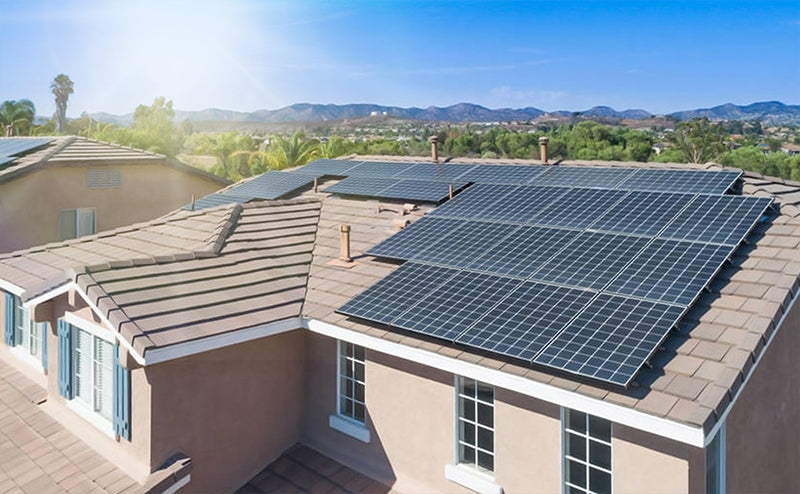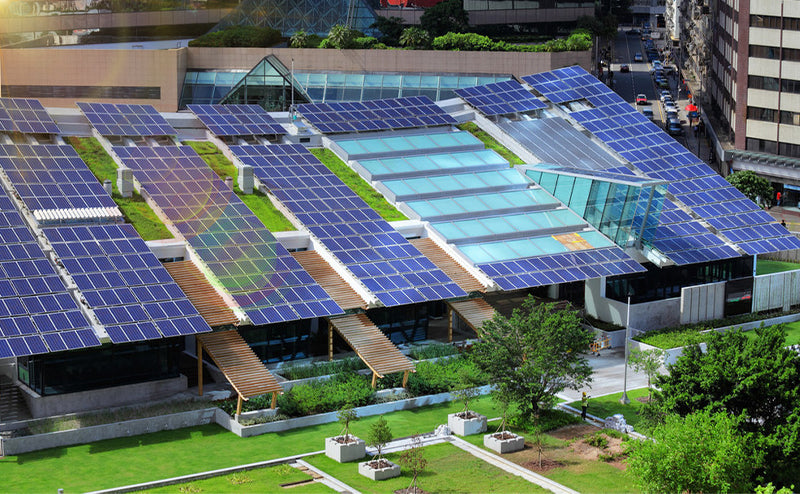A net-zero power system is closer than we think.
New research, published by RMI, indicates that an exponential surge in renewable energy deployment is outpacing the International Energy Agency’s most ambitious net-zero predictions for 2030.
That’s right: Surging solar, wind, and battery capacity is now in-line with net-zero scenarios.
“For the first time, we can, with hand on heart, say that we are potentially on the path to net zero,” Kingsmill Bond, Senior Principal at RMI, said. “We need to make sure that we continue to drive change, but there is a path and we are on it.”
And that’s really good news.
Exponential growth in renewable energy has put the global electricity system at a tipping point. What was once seen as a wildly daunting task — transitioning away from fossil fuels — is now happening at a faster pace every year.
Based on this new research, conducted in partnership with the Bezos Earth Fund, RMI projects that solar and wind will supply over a third of all global electricity by 2030, up from about 12% today, which would surpass recent calls for a tripling of total renewable energy capacity by the end of the decade.
Global progress in the renewable energy sector
China and Europe have been leading the way in clean energy generation, but the deployment of renewable energy has also been widely distributed across the Middle East and Africa.
Research from Systems Change Lab shows that eight countries (Uruguay, Denmark, Lithuania, Namibia, Netherlands, Palestine, Jordan, and Chile) have already grown solar and wind power faster than what is needed to limit global warming to 1.5°C, proving that a swift switch to renewable energy is not only feasible — it’s entirely achievable.
In order to make that switch, globally, wind and solar need to grow from 12% to 41% by 2030. Denmark, Uruguay, and Lithuania have already achieved that increase in the span of eight years.
Meanwhile, Namibia, the Netherlands, Palestine, Jordan, and Chile have grown solar and wind energy at sufficient rates for five years.

As clean energy surges, fossil fuel demand for electricity continues to move in a steep decline. According to the RMI analysis, demand will be down as much as 30% between 2022 and 2030.
In fact, researchers believe fossil fuel demand has peaked, and the electricity sector will be in free fall by the end of the decade.
The economic impact of climate progress
Not only is this an exciting and unprecedented development for the health of the environment, but this rapid transition to clean energy includes widespread benefits, like jobs growth, more secure supply chains, and reductions in energy price inflation.
This progress spans both developing and developed countries, all driven to accelerate renewables for a number of different reasons: adopting smart and effective policies, maintaining political commitments, lowering the costs of renewable energy, and improving energy security.
And with exponential growth of clean energy means sharp declines in prices. This puts fossil fuels at a higher, uncompetitive cost — both financially and figuratively.
RMI suggests that solar energy is already the cheapest form of electricity in history — and will likely halve in price by 2030, falling as low as $20/MWh in the coming years. This follows previous trends: solar and battery costs have declined 80% between 2012 and 2022, and offshore wind costs are down 73%.
“Exponential growth of clean energy is an unstoppable force that will put more spending power in the pockets of consumers,” Bond said.
“The benefit of rapid renewable deployment is greater energy security and independence, plus long-term energy price deflation because this is a manufactured technology; The more you install, the cheaper it gets.”
Staying on the path to net-zero will take collaborative effort
As electricity and road transport reach unprecedented demand — both away from fossil fuels and toward renewables — these numbers indicate that now is the time to further accelerate the clean energy transition.
“This is a clear signal to policy makers, businesses and investors to seize the opportunity of accelerating the energy transition,” Christina Figueres, the former executive secretary of UNFCCC and a founding partner of nonprofit Global Optimism said.
“The call to triple renewable electricity investment and capacity by 2030 are deliverable. But only by removing barriers to faster renewable deployment, from streamlining permitting to redirecting subsidies for polluting energy. Otherwise, the exponential growth we are seeing and the benefits that come with it could be derailed unnecessarily.”

In addition to permitting and redirecting subsidies, some of those barriers include building out the grid, improving regulatory and market systems, and speeding up renewable capacity deployment in the Global South.
Exponential growth is already happening, and as Faustine Delasalle — the executive director of Mission Possible Partnership — said, “It’s important to encourage corporate leaders and policymakers to think with that exponential [growth] in mind, because we will only reach the big dream if we continue dreaming big.”
“If we dream small, then policymakers and corporate decision makers will continue to make decisions based on small calculations of short-term profits.”
And dreaming big is something we can all do to make a real, meaningful difference to keep the world on our current path to net-zero.
Header image of solar power plants in Denmark courtesy of Erik Christensen (CC BY-SA 3.0).
For more information, please click here: https://isolarparts.com
Twitter: Solarparts Instagram: Solarparts
Tumblr: Solarparts Pinterest: Solarparts
Facebook: Shenzhen Solarparts Inc
Email address: Philip@isolarparts.com



